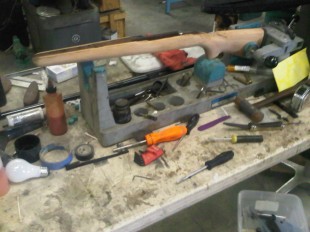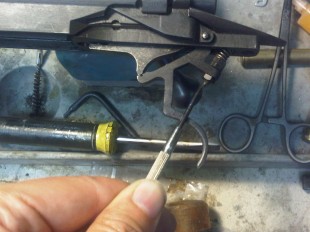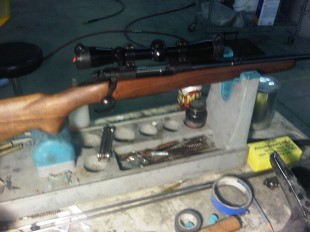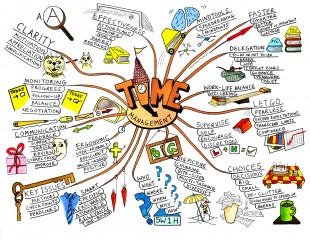 This post is for those of you who have read Emergency.
This post is for those of you who have read Emergency.
For those of you who haven’t, shame on you:
www.neilstrauss.com/books/emergency
Anyway, just like The Game, Emergency was never intended to be a book. It began as a life goal, and it’s something I continue to pursue.
to pursue.
So I spent July 4th weekend visiting one of my favorite people I met while working on Emergency: Mad Dog, best known as one of the world’s finest makers of fixed-blade knives. Many people would tell you he’s actually the best, and although I don’t have the expertise to support that claim, so far I haven’t heard or seen any contradictory information.
If you recall, Emergency begins with Mad Dog taking my girlfriend and I into the forest to learn about survival–an experience that still haunts me to this day. And this weekend, I learned from Mad Dog that he intentionally made it as hard on me as possible:
“I purposely chose the cutest goat I could find,” he admitted, “really quiet and tame, with these long eyelashes, to fuck with you. My wife saw it and thought it was adorable. She got mad at me and said I was being cruel, but I told her, ‘If he can kill this, then he can kill anything.’”
After explaining this, he gave me a gift: a wristband with the words, “Harden the Fuck Up.”
Beyond the revelation about Bettie the goat, it was one of the most informative weekends I’ve had. And it brought up a point I really want to share with all of you here: A lot of books that do well in the self-improvement and self-enhancement fields are about SHORTCUTS. And many of those shortcuts will help people improve to a certain degree. However, if you truly want to master anything in life, it is not enough to know how to use a tool—whether it be a physical object, an idea, or a concept—you have to truly understand that tool.
So, with that in mind, for his birthday weekend, Mad Dog decided to do a workshop on rifle bedding. However, it covered much more than that, so let’s just call it Pimping Your Rifle.
In this case, as those of you who read the book know, Mad Dog’s weapon of choice is the classic bolt-action rifle: the 30-06 caliber Winchester Model 70 manufactured before 1964 (ideally between 1949 and 1953 when the bolt was one piece, rather than two welded together).
One of the things I learned in Emergency was that things that seem solid to us, whether the walls of a house or the surface of a table or anything at all man-made, are just craftsman’s objects, able to be repaired and reshaped at any time if you have the right tools. And the same is true of a rifle.
The first thing I did when arriving at Mad Dog’s laboratory in Prescott, Arizona, is take apart my rifle, removing the stock from the metal of the gun. He then measured my arm, and we went to the bandsaw and literally sheared off the butt of the rifle so that it made a perfect fit between my shoulder and trigger finger. We then sanded it down until it was level, drilled in new screws, and attached a new recoil pad. Because rifles generally don’t come in “fitted sizes,” I never thought they could actually be fitted. A gun, in particular, was not something I’d previously thought of messing with. I thought perhaps it was scientifically weighted, and this would interfere with the accuracy.
Next, because it was a used rifle that had been well-worn, he had me take the stock and sand just about everything off of it, first on an orbital sander then with finer sand paper. Literally, every bit of stain and every bit of the checkerboard design were gone and, by the end, it looked something like this:

From there, I added walnut stain, and several coats of tung oil, until it looked sharp and brand new. What was amazing was that during the process, the rifle changed from an alien object I’d purchased from a second-hand gun broker to something that was mine, that I knew and understood, that I felt connected to.
Next, we drilled holes into the bottom of the stock so I could attach swivel mounts for a strap.
What was most interesting, however, was when Mad Dog showed me how to set the trigger. Underneath the trigger, there were three lugnuts and one screw. And by turning one lugnut, I could change the spring pressure. And by moving the screw, I could change the trigger pull—so that it traveled the least amount of distance possible.

And this simple act, getting inside the gun and knowing, seeing, feeling, and adjusting exactly what happens mechanically when I pull the trigger, made me a much better rifleman. Though I went to Gunsite in the book, I’d recommend for anyone interested in learning how to use a gun also learn how to take one apart, optimize it, and put it back together.
Afterward, we worked on the other pieces of the gun, cleaned and oiled everything using Mad Dog’s homemade compounds, and mounted a scope, until we ended up with something like this:

I realize that not all of you own a rifle —or even should own one—but there’s a basic lesson that applies to everything you’re doing: approach things with the open-minded curiosity you had as a child. And, when it’s safe to do so, take it apart and see what’s inside, then put it back together. The experience of doing this successfully will bring you that much closer to becoming an expert, whether you’re unpacking a rifle, a car, a technique, a thought, an idea, or a process:
—or even should own one—but there’s a basic lesson that applies to everything you’re doing: approach things with the open-minded curiosity you had as a child. And, when it’s safe to do so, take it apart and see what’s inside, then put it back together. The experience of doing this successfully will bring you that much closer to becoming an expert, whether you’re unpacking a rifle, a car, a technique, a thought, an idea, or a process:

However, now, the only problem is, I don’t want to shoot my rifle, I want to frame it.
it.
For more information on Mad Dog, visit: TacticalForums.com
*
Related Stories from The Inner Circle
We Are All Survivalists
All The Bleeding Stop Eventually
How To Build A Blackout Kit
